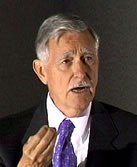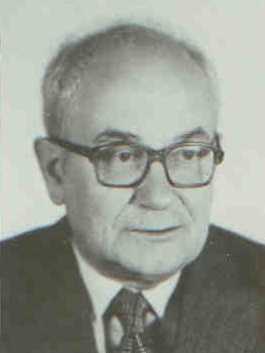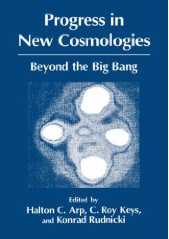-
 Astronomer(Astronomy, Galaxies, Quasars, Pulsars, Redshift, Big Bang)
Astronomer(Astronomy, Galaxies, Quasars, Pulsars, Redshift, Big Bang)Halton Christian Arp received his Bachelors degree from Harvard College in 1949 and his Ph.D. from California Institute of Technology in 1953, both cum laude. He is a professional astronomer who, earlier in his career, conducted Edwin Hubble\'s nova search in M31. He has earned the Helen B. Warner Prize, the Newcomb Cleveland Award and the Alexander von Humboldt Senior Scientist Award. For 28 years he was staff astronomer at the Mt. Palomar and Mt. Wilson observatories. While there, he produced his well-known catalog of \"Peculiar Galaxies\" that are disturbed or irregular in appearance. Arp discovered, from photographs and spectra with the big telescopes, that many pairs of quasars (quasi-stellar objects) which have extremely high redshift z values (and are therefore thought to be receding from us very rapidly - and thus must be located at a great distance from us) are physically connected to galaxies that have low redshift and are known to be relatively close by. Because of Arp\'s observations, the assumption that high red shift objects have to be very far away - on which the Big Bang theory and all of \"accepted cosmology\" is based - has to be fundamentally reexamined.
Articles:
- \"A Possible Relationship Between Quasars and Clusters of Galaxies\" Astrophysical Journal, 2001, V549, pp. 802-819 (with D. G. Russell).
- Dennis Overbye, \"Halton C. Arp, Astronomer Who Challenged Big Bang Theory, Dies at 86\" (Jan 6, 2014).
-
 Publisher, Editor of Apeiron
Publisher, Editor of Apeiron -
 Professor of Astronomy(Cosmology, Astronomy, Philosophy of Science)
Professor of Astronomy(Cosmology, Astronomy, Philosophy of Science)Konrad Rudnicki is a professor at Jagiellonian University, Cracow, Poland. He is a member of the Free European Academy of Science (Holland), member of the Commission of Galaxies of the International Astronomical Union and member of the Mathematical-Astronomical Section at the Goetheanum, (Switzerland). Prof. Rudnicki has been Senior Research Fellow at the California Institute of Technology (1965-67), visiting professor at Rice University, USA (1988-89). His areas of interest are: extragalactic astronomy, cosmology, philosophy of science and methodology of science. He is the author of 12 scientific books, 103 original astronomical papers and some 240 popular essays in astronomy. He discovered (together with B. Wszolek, P. de Bernardis and S. Masi ) the infrared light from intergalactic dust clouds, 11 supernovae and 1 comet.
Rudnicki was born in 1926 in Warsaw, Poland. From 1943 to 1945 he served in a partisan corps of the People\'s Guard and later the People\'s Army. After graduating from a clandestine high school in Piotrkow Trybunalski, he studied astronomy at Warsaw University from 1945 to 1949. He began working at the University Observatory in Warsaw in 1950. In 1952 he received his Doctor of Science, becoming an Assistant Professor in 1961. In 1962 he spent a year as a Research Fellow at California Institute of Technology, returning to Caltech in 1965-67 as a Senior Research Fellow. In 1969 he became Associate Professor, and in 1975 Professor at the Jagiellonian University in Cracow , Poland. He was Visiting Professor at the Mathematisch-Physikalisches Institut in Dornach, Switzerland in 1978-79, and in 1988-89 at Rice University in Houston, Texas, USA. He has been a Member of the International Astronomical Union since 1958. In 1991 he was elected a member of the Free European Academy of Science. He is an active member of the Anthroposophical and Mariavite movements.
Enter the content which will be displayed in sticky bar


